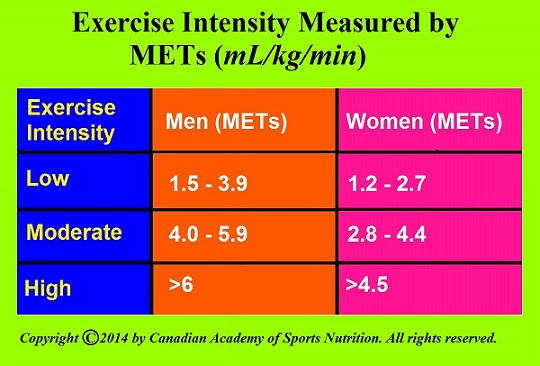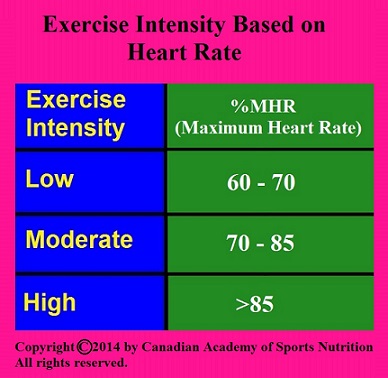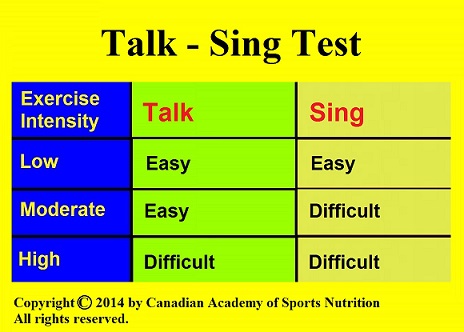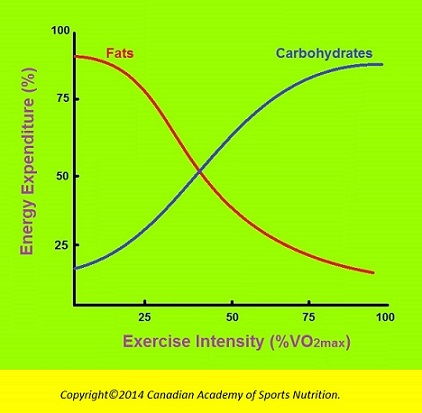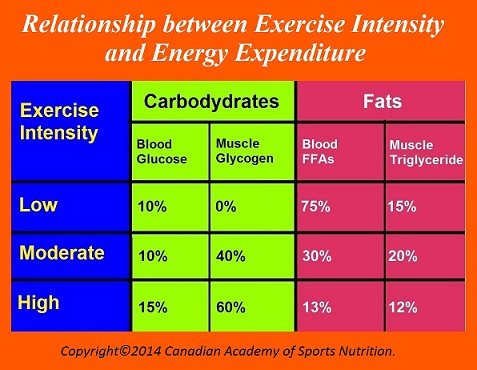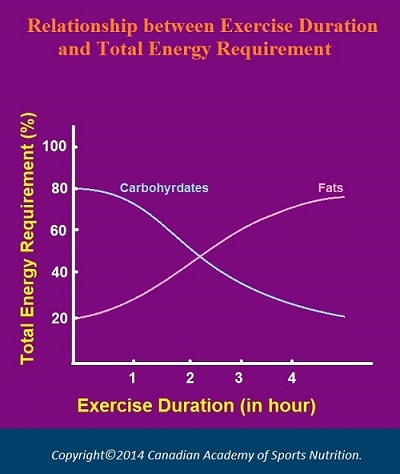Carbohydrates and fats are the main sources of energy during exercise. Carbohydrates in the forms of blood glucose and muscle glycogen and fats in the forms of free fatty acids (FFAs) and muscle triglyceride are the fuels for the working muscles during an exercise session or a competition. Whether the body would consume mainly carbohydrates or fats depends on two major factors: intensity and duration of exercise. Fitness level and nutritional status of an individual are considered minor factors.
Intensity of Exercise:
Intensity of exercise is a key factor in burning fats during a physical activity. It is defined as a percentage of the maximal oxygen consumption (VO2max). Intensity of exercise is measured by MET (metabolic equivalent task). MET is a physiologic measure that shows how much oxygen is consumed by the body in one minute, which is different in men and women.
One MET is equal to 3.5 mL/kg/min. Age and sex are the two important parameters that affect MET and intensity of exercise. For example, a low intensity activity for a young man is a moderate intensity activity for an old man and a high intensity activity for a very old person. For the classification of exercise intensity based on METs in adults, see the table .
MET is the most accurate way to measure oxygen consumption during a physical activity. It would determine exercise intensity. However, it is not practical for most athletes and people to measure the intensity of their exercise in METs. This is why the “heart rate” and “talk – sing test” are good indicators of exercise intensity.
Heart Rate (HR):
Heart rate is a good and practical indicator of exercise intensity, though it is not as reliable as MET. To determine the intensity of exercise, you need to know the maximum heart rate (MHR). The MHR is calculated as 220 minus your age. For example, if you are 45 years old, your MHR is 175 (220 – 45). For exercise intensity based on heart rate, see the table below.

There is an inverse relationship between exercise intensity and fat consumption. The major source of energy for low intensity exercise is fats, providing approximately 90% of energy. As the intensity of exercise increases, the sources of energy would change. During moderate intensity exercise, about 50% of energy supply comes from carbohydrates and the other 50% from fats. High intensity exercise requires an easily accessible sources of energy, which are carbohydrates.
For the relationship between exercise intensity and energy expenditure, see the figure and table below.

Exercise Duration
Exercise duration is another major factor that determines the source of energy supply during exercise. There is a direct relationship between exercise duration and fat consumption. In a prolonged exercise, as glycogen reserves get depleted, fats in the form of free fatty acids (FFAs) provide up to 80% of the total energy requirement.
For the relationship between exercise duration and total energy requirement, see the figure below.

